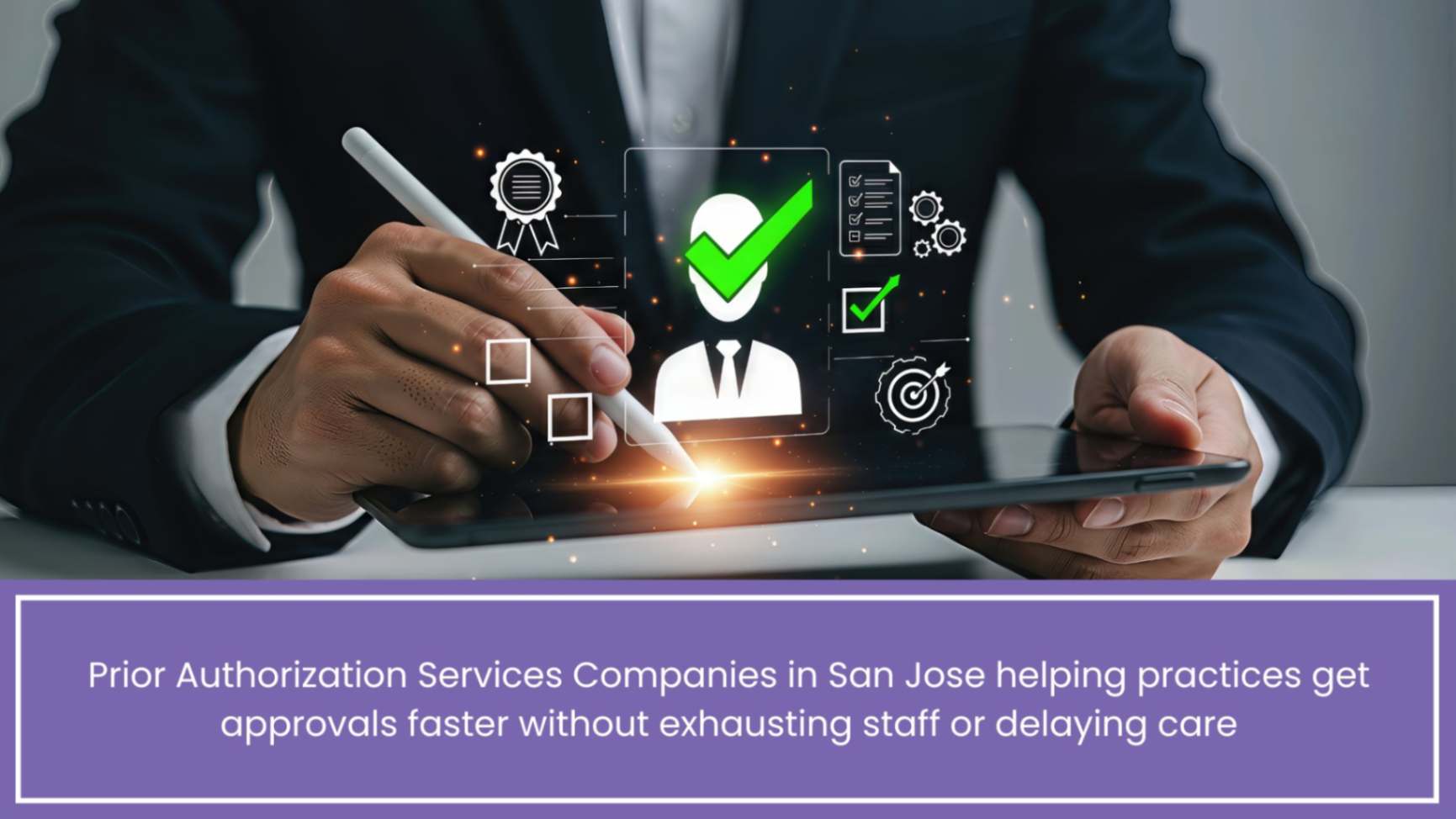How Revenue Cycle Management Reduces Claim Denials
In the healthcare industry, claim denials are a recurring problem that have a big influence on revenue and operational effectiveness. For any healthcare provider hoping to achieve financial stability, it is essential to comprehend how revenue cycle management reduces claim denials. In order to reduce denials, speed up cash flow, and improve your revenue cycle, this article examines complete strategies ranging from front-end procedures to sophisticated analytics. Use these tried-and-true strategies to improve overall performance and protect the financial future of your practice.
Denials of claims are a significant source of financial loss for healthcare organizations, costing them billions of dollars each year in lost income and administrative expenses. The good news is that this problem may be considerably reduced with the use of planned processes and a strong Revenue Cycle Management (RCM) system. Financial health depends on knowing how revenue cycle management lowers claim denials. This section outlines a step-by-step approach to setting up effective denial management workflows within your RCM.
Table of Contents
Step-by-Step Guide: Setting Up Denial Management Workflows in RCM
Reducing claim denials in the healthcare revenue cycle management requires the implementation of a methodical denial management procedure.
- Accurately identifying and classifying each denial is the first stage in the process. This entails being aware of the precise reason codes that payers have supplied (e.g., CO-45: Charge exceeds charge schedule/maximum permissible, CO-16: Claim lacks information). Use your RCM software to track these codes.
- Root Cause Analysis: For each category of denial, perform a deep dive to identify the root causes of claim denials and RCM solutions. Is it an issue with patient registration, insurance verification, coding, or documentation? This analysis is critical for denial prevention in healthcare revenue cycle.
- Make Corrective Action strategies: After identifying the underlying problems, make detailed, doable strategies to deal with them. For example, the plan may require real-time verification at each patient touchpoint if eligibility denials are high.
- Implement these remedial measures within your RCM process. Automate the process to ensure effectiveness. Use revenue cycle automation whenever possible. This includes automated eligibility checks and claim scrubbing to help avoid denials.
- Track trends and denial rates. Monitor them at all times. Utilize revenue cycle management’s claim denial analytics. Assess the effectiveness of your remedial measures using these analytics.
- Staff Training: Inform staff members about denial trends and best practices. Communication: Regularly communicate these information to staff. This ensures everyone is aware of their responsibilities in preventing RCM claim denials. This awareness helps prevent RCM claim denials.
This structured approach is central to how RCM software reduces claim denials and enhances overall financial performance.
How Training Your Staff on RCM Best Practices Reduces Denials
Human error is a significant contributor to claim denials. Therefore, investing in comprehensive and ongoing staff training is a non-negotiable component of best practices for reducing claim denials. When staff members are well-versed in RCM best practices for reducing claim denials, they become the first line of defense against errors.
Training should cover:
- Accurate insurance and demographic data are crucial for correct patient registration.
- Comprehensive Eligibility Verification ensures employees are aware of benefit limitations. It also ensures employees know how to use real-time tools to access benefits.
- Accurate coding requires consistent revisions to CPT, HCPCS, and ICD-NCM codes. This includes using modifiers and NCCI revisions.
- Detailed documentation is crucial for healthcare professionals. It emphasizes the importance of thorough clinical notes that support medical necessity and services provided.
- Payer-Specific Rules: Instruction regarding the specifics of various payer contracts and their requirements.
- Denial Appeal Procedures: Giving employees the information and abilities they need to successfully contest rejected claims.
By empowering your team with this knowledge, you significantly improve revenue cycle to lower claim denials and foster a culture of proactive denial prevention.
Role of Analytics in Identifying and Preventing Claim Denials
Data is power in RCM, and claim denial analytics in revenue cycle management is the engine that drives effective denial prevention. Simply knowing you have denials isn’t enough; you need to understand why they are happening and where the patterns lie.
Advanced RCM systems utilize analytics to:
- Find Trends: Determine the most frequent grounds for denials across treatment lines, payers, or even individual providers.
- Predictive analytics is used to identify claims likely to be rejected. These technologies help reduce claim denials before submission.
- Track rejection–related key performance indicators. Evaluate performance based on denial rate, appeal success rate, and days to resolve denials.
- Find hidden problems. Expose systemic issues that may go undetected without data analysis.
In order to provide focused denial management solutions for healthcare providers and make well-informed decisions that really lower claim denials in the healthcare revenue cycle, this data-driven approach is essential. The effective use of data significantly increases the influence of revenue cycle management on claim denials.
Common Reasons for Claim Denials—and How RCM Solves Them
Understanding the root causes of claim denials and RCM solutions is fundamental to prevention. Here are some of the most common reasons for denials and how a robust RCM addresses them:
Patient Eligibility/Coverage Issues:
Reason: Inactive insurance, no coverage for service, patient not found.
RCM Solution: Real-time eligibility verification at the point of scheduling and check-in. This is a game-changer for front-end denial prevention.
- Lack of Medical Necessity:
Reason: According to the documents, the payer does not consider the billed services medically necessary.
RCM Solution: Thorough training for providers on documentation requirements, guaranteeing that clinical notes unambiguously demonstrate the medical necessity of every service.
- Coding Errors:
Unbundling, incorrect modifier usage, or erroneous CPT, ICD-10-CM, or HCPCS codes are the reasons why the claim was denied. The claim was denied as a result of these mistakes.
RCM systems make use of software that takes into account payer-specific coding guidelines and NCCI revisions, certified coders, and frequent coding audits. This method lessens the number of claims that are denied.
- Prior Authorization Issues:
Reason: Prior authorization was needed for the service, but it was either rejected or not acquired.
RCM Solution: Proactive communication with payers, automatic tracking of permission statuses, and dedicated prior authorization workflows.
- Timely Filing Limits:
Reason: Claims submitted after the payer’s deadline.
RCM Solution: Automated claim submission processes and strict internal policies for daily claim filing.
- Missing or Incomplete Information:
The claim form lacks important information. This missing information includes the patient ID and the referring physician’s NPI.
RCM Solution: Robust claim scrubbing tools that identify missing data fields before submission, and thorough front-end data collection.
Addressing these common issues through integrated RCM processes is key to how to prevent claim denials with RCM.
Real-Time Eligibility Verification: Why It’s a Game-Changer for Denial Reduction
One of the most impactful steps to reduce claim denials in medical billing starts at the very beginning of the patient journey: eligibility verification. Real-time eligibility verification: why it’s a game-changer for denial reduction cannot be overstated.
In the past, eligibility checks may have been done manually, taken a long time, were prone to mistakes, or were only done once. Payer systems are directly integrated with real-time verification technologies, enabling practitioners to rapidly verify:
- Active insurance coverage
- Patient responsibility includes deductibles, co-pays, and co-insurance. These costs are the patient’s financial share of healthcare expenses.
- Service-specific benefits and limitations
- Need for referrals or prior authorizations
Practices can collect patient portions up front, talk about other payment plans, or get the required authorizations by identifying these problems before the treatment is provided. Front-end rejections, which are frequently the simplest to avoid but the most expensive to fix after service, are significantly decreased by this proactive strategy. It’s a cornerstone of effective denial prevention in healthcare revenue cycle.
Automation in RCM: The Secret to Fewer Claim Denials
The sheer volume and complexity of healthcare claims make manual processing a breeding ground for errors. This is where automation in RCM: the secret to fewer claim denials comes into play. RCM automation uses technology to complete rule-based, repetitive operations far more quickly and accurately than a human could.
Key areas of automation that contribute to denial reduction include:
- Automated Claim Scrubbing checks claims for coding mistakes, missing data, and NCCI modifications before submission. This process ensures accuracy and completeness of the claims.
- Robotic Process Automation (RPA) can automate data entry tasks. RPA can also automate status checks and some parts of denial follow-up.
- ERA & EFT: Automate payment posting and reconciliation. This will decrease human error and accelerate cash flow.
- Automated patient statements and reminders can help reduce bad debt. This is achieved by ensuring prompt patient collections.
By minimizing human touchpoints in routine processes, revenue cycle automation to prevent denials significantly improves claim accuracy and submission rates, directly leading to a reduction in denials and a healthier bottom line. This is a crucial aspect of the role of RCM in decreasing insurance denials.
What is the average denial rate considered acceptable for a healthcare practice?
Generally speaking, a denial rate of 5% to 10% is seen suitable. However, the payer mix and specialty may affect this rate. The best-performing strategies strive for rates under 5%. These rates are often what they aim for. Anything consistently above 10% indicates significant underlying issues.
How quickly should a denied claim be appealed or corrected?
Being prompt is essential. Claims should be examined, amended, and resubmitted or appealed. They should ideally be done within 24 to 72 hours after rejection. Many payers have stringent deadlines for submitting appeals. Prompt action is necessary to prevent income loss.
Can RCM software truly prevent all claim denials?
No software can prevent all denials, as some are due to complex clinical decisions or payer policy changes. Sophisticated RCM solutions automate inspections and offer insights to reduce avoidable claim denials. Denials due to missing information, coding mistakes, or eligibility can be easily reduced. These methods can significantly help with that.
What’s the difference between a claim rejection and a claim denial?
A claim rejection happens prior to the payer processing it, frequently as a result of missing required information or formatting mistakes. These are typically caught by claim scrubbing and can be corrected and resubmitted quickly. Following claim processing, a claim denial signifies that the payer has examined the claim and decided not to pay for a particular reason (e.g., lack of medical necessity, no prior permission). More thorough research and frequently an appeal are needed for denials.
Conclusion:
Healthcare firms need to understand revenue cycle management to improve financial success. This understanding helps them lower claim denials. Practices can drastically reduce avoidable denials. Proactive actions at all RCM levels are part of these practices. These precautions include targeted automation, advanced analytics, and comprehensive front-end verification and staff training. This comprehensive approach enhances cash flow. It also safeguards income. It simplifies procedures. This frees up doctors to concentrate on patient care. Investing in strong RCM is an investment in a more efficient healthcare system. It also makes the healthcare system more financially secure.
A well-organized denial management workflow can significantly buck the trend of claim denials, which are a major source of healthcare revenue loss. Creating efficient denial prevention procedures in your Revenue Cycle Management (RCM) system is examined in this comprehensive tutorial. Discover how to pinpoint the underlying reasons, carry out remedial measures, gain insight from analytics, and reduce errors by utilizing automation. The blog also emphasizes how proactive denial tracking, real-time eligibility verification, and staff training can increase reimbursement rates. These tactics enable your team to lower denials, increase cash flow, and boost operational efficiency—whether you’re running a clinic or a hospital. Find out how your billing procedure can be turned into a denial-resistant, efficient engine for financial success with the help of contemporary RCM solutions.
ALSO READ – Essential Tips for Error-Free Orthopedic Billing and Coding: Boost Your Practice’s Financial Health
Talk to Medical Billing Expert Today — Get a Free Demo Now!






